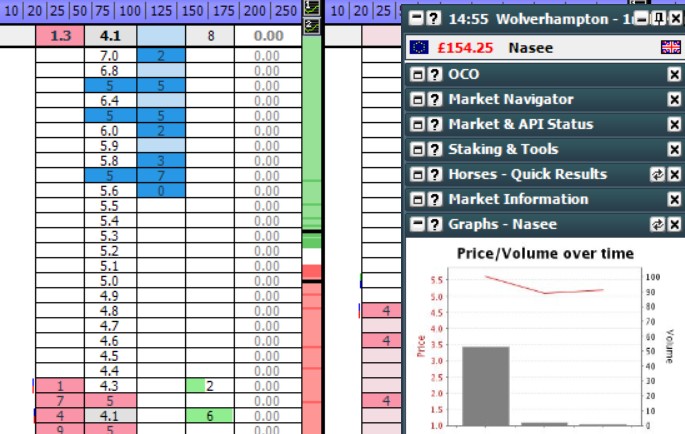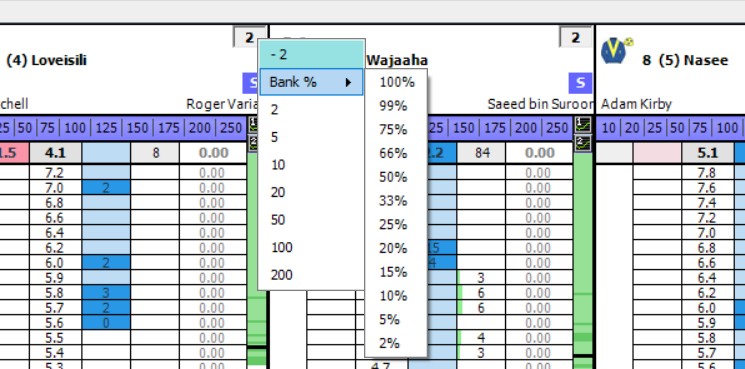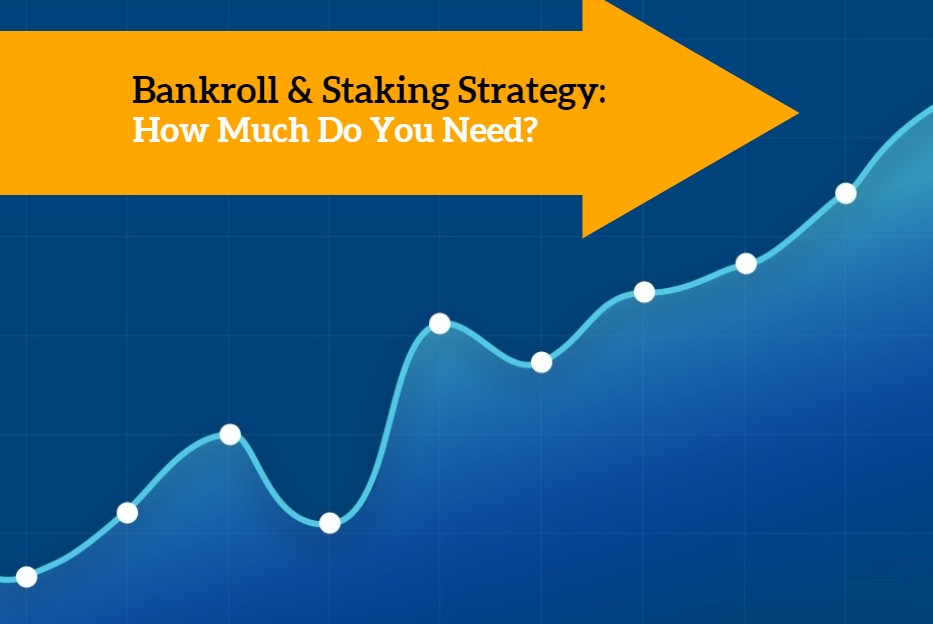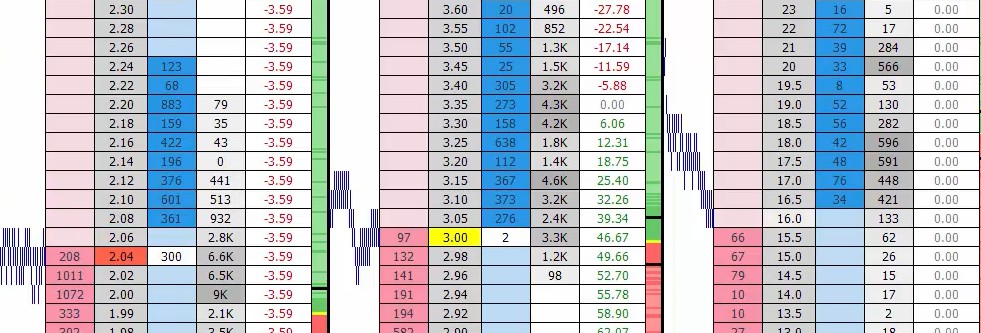Staking strategy matters, right? And if it does – your trading bankroll must too…
Of course, they both matter (quite a bit). But are you coming at things from the right angle? Many don’t.
In this article, we’re going to help you out! Guiding you through all the points that matter:
- How much money do you need?
- What are good starting stakes?
- Is percentage staking a good route to take?
- Can a good staking strategy limit your risk?
- What’s possible on which stakes?
We’ll even discuss some previous results and the bankroll used. Sound good? Let’s get stuck in…
Required Bankroll: How Much You Really Need…
If we’re talking bare minimum, absolute basics, I’m going to suggest £200. But before we get into the specifics, there’s a little housekeeping to clear up.
You can begin your journey into the markets for absolutely nothing. If you’re at day one of your trading education I’d suggest taking this path for at least two weeks, there’s no point burning a penny more than you need to!
Just about all Betfair software’s come with a free trial. If they’re any good, there’s an option to use training mode too. More about training mode in a second but those very first baby-steps don’t need to cost a penny. Getting used to the software, understanding the ladders and becoming comfortable with opening and closing positions fast will all suck you into an inevitable loss early on. Resist the urge, keep your powder dry…
If you really can’t wait, and want a fast track to getting set up there’s a beginner’s course here.
Beyond the use of free trials and simulation trading, there has to come a point where you start to use real money though. As you may realise, it’s far harder to treat the markets seriously when there’s nothing at stake. Two hundred pounds is about right, it’s all you’ll need to dip those toes in and feel the markets under-current.
For most, winning or losing a couple of quid a time brings everything to life. Just enough excitement to stir interest and see the possibilities, but not so much you have a nervous breakdown after a couple of mistaken clicks… by the way, that’s bound to happen at some point. Poor discipline and the odd foolish mistake can rob you in the markets. They’re cold hard and unforgiving, but it works both ways – one person’s loss is another’s gain…
Don’t be fooled by some of the claims and comments that bounce around online. The majority of the time it’s people just trying to help out, but we’ve seen all sorts over the years. You don’t need a £2,000 bank to start, but on the other hand, £20 isn’t that realistic either. Trading isn’t just having a punt!
So, to begin; you don’t need anything fancy. Beyond the first couple of steps – a couple of hundred quid will suffice (on stakes as we’ll suggest in a second). Your main priority needs to be learning all that you can, getting familiar with the tools required and building into this new way of turning a profit. It doesn’t matter how big your trading bank is, or even how good your staking strategy with that bank if you haven’t a clue what’s going on. A little patience can go a long way.
Staking for Starters:
We’ve mentioned training mode already, let’s start there… because it comes with an issue – data usage.
Betfair doesn’t mind exchange traders making full use of trading applications, although they aren’t keen on users who endlessly poll their exchange without any intention of placing a bet. There’s a number of reasons for this, which are entirely fair. You see, betting market data is useful. Some smart individuals have racked up huge demand on exchange to skim, save and even sell market data. The solution is simple; place a bet.
You don’t have to risk a lot, a simple £5-£10 scratch trade will suffice from time to time. If you don’t, there’s a change that Betfair will put a temporary block on your account. Just so you know.
This small hiccup aside; training mode has to be the first place to start. Swiftly followed by some very low stakes. Putting £50’s and £100’s into the market before you have solid reason to doesn’t make sense. In most cases, starting on £2, £5 and £10 stakes are plenty.
You may be wondering – If I suggest £5 stakes, why do you need a £200 bankroll?
Because you’re about to come up against a couple of minor problems, ones that you need to factor into your staking strategy:
- Laying at high prices
- Placing multiple bets

In short; low stakes and a bankroll far bigger will offer you more freedom to manoeuvre within the market.
It’s important not to ‘overstretch’ your bankroll. Doing this will lead you into making daft mistakes, the kind that leaves you feeling pretty foolish when it all goes wrong. We don’t want that.
What do I mean by overstretching your bankroll?
Easy, if you have a trading bank of £200, and you lay for £5 at 11.0 the liability is £50 (25% of your bank). Do that 4 times and you’re hands are tied, you can’t place another lay!
Lower stakes will afford you more trading freedom (and margin for error). Don’t be too hasty to increase your staking before there’s a good reason…
Staking Strategy: Should You Use % Staking?
It’s common for up-and-coming sports traders to blur the lines between Betfair and financials. This isn’t the Stock Market, and it’s not Forex either. Try not to assume similarities that aren’t there.
Percentage staking is often one of those assumptions. In the very early days, it’s could prove helpful – but once you become profitable, you’ll quickly realise it’s only helpful up until a point.
If you’re interested, the Geeks Toy software has percentage staking built in.

The main problem with percentage staking is obvious when you think about it. All opportunities are different, some are quite obvious, others require a little intuition and uncertainty. So why would you decide how much to risk based on your bank balance?
Surely a better opportunity requires larger stakes and vice versa…
Overall conclusion: It’s probably more of a personal choice, so I’m not going to definitively say if you should be using percentage staking or not. Just that I’d be more supportive of its use in the early stages of learning. Why? For discipline purposes. Plus as a side note, you need to remember that different markets have different levels of liquidity. Simply staking £100 at Ascot and then £100 at Lingfield in the race after is not the same. It might look nice for percentage staking purposes, but realistically, the second market is likely to carry more risk at those stakes.
Limiting Your Risks: Staking Strategies
Trading successfully is all about limiting risk, which means you must keep a tight reign on your stakes. That makes sense, right?
As Warren Buffet, the well-known billionaire investor once said:
- Never lose money.
- Never forget rule 1.
Sound advice. Some won’t want to hear it but, trading is all about being efficient, meticulous and disciplined. There’s no room for the frivolous and foolish.
So what’s the best staking strategy to use?
A common question, one that I was asked on a recent betting podcast. As you may have already guessed, a tricky one to give a fixed answer to. When I first started to find success I employed the 3-4 click method…
Quite simply, one click (on a fixed stake like £5) for each trade. If I felt it was an above-average opportunity, I’d allow one more, double-clicking my way to £10 stakes. Finally, if it was really good a third click – allowing no more than 3 x stake at any one time unless it was one of those insane crazy can’t-believe-my-luck situations where I’d go with the 4th.
It worked well.
Now, I tend to click a fair bit more and on far bigger stakes – but I’ve always got a scale I operate within mentally. Because it doesn’t matter who you are, you still need discipline.
Another factor that should be factored into your ‘staking strategy’ is the prices at which you trade. For example, if I’m trading £200 stakes at 3.5 I know the risk/reward is around £3 per tick increment. However, if I’m trading that same £200 stake at 10.0+ I’ll be risking about £10 a tick.
To be completely honest with you, I’m not keen on terms like ‘staking strategy’ or ‘bankroll management’. They seem to come hand in hand with those who lack discipline. The very fact you need some third-party strategic blueprint to manage your discipline for you doesn’t sit well with me… risk and opportunity are variable, the best staking plan matches them.
My Results v’s Bank Shared…
I’ve no doubt that just about every reader still wants a fixed answer to that “but what’s possible?” line…
For some reason, no matter how good the explanation has been – people want figures. So who am I to deny you?!
Here are a couple of examples (that have happened):
Last year’s £400 trading bank challenge was completed on the pre-race markets. With a rather risk-averse trading style, and the pressure of readers heading back over to the blog that evening to see how it had turned out, a profit of £194.97 was made.
Almost 50% growth, something you’re not likely to see on a larger bank!
Another Example:
In this blog post, after returning from a couple of weeks in the Maldives I produced a profit of £712.64 for the afternoon.
This was achieved with a trading bank of £4,500 – £5,000. A far smaller growth increase of 12%, even if it was more money…
But does it really matter what the %’s are? I certainly don’t think so. The main objective for me is always progress, limiting risk and stress and producing a steady but consistent return. If you can do that, you should end up pretty happy over the long term. I certainly am!
Simple Beginning: For Anyone Starting Out…




13 thoughts on “Bankroll & Staking Strategy: How Much Do You Need?”
When l started using training mode l give myself a 5k bank which l realised was a mistake when l lost my first real £200
bank. Back to training mode but with a £400 bank, l increased my bank by the profit l made or deducted the lost. I am pre race only and l am averaging more than £5 per race. I feel more confident about reading the market and l am not click happy anymore and not going in play unplanned. I am just putting money aside for my £400 starting bank. HAPPY DAYS
Sure Mike, I can see how that was a bit of a shock for you!
Another helpful tip (once people are profiting) would be to put that money aside, as you are, and re-invest it in any extra equipment that you might need or want. I did this early on with monitors etc. When you’re sat looking at some monitors that were paid for by your trading activity it’s a consistent reminder, and confidence booster to one degree or another…
£5 a race is a decent start, I’m sure some will roll their eyes but it soon adds up. Once you’re averaging £7-£10 things become a lot more interesting. Keep up the good work!
Caan
Thanks for the encouragement Caan, l am lucky l can trade every afternoon and early evening if l want to, as my work hours are flexible. I record every market l trade so some afternoons l review my trades instead if l don’t feel in the right frame of mind.
Speaking about investing in equipment Caan, has the internet or router ever crashed on you during a pre race trade? Mine did yesterday and I can safely say that I have never experienced such a blind panic in my life! What do you do to avoid this occurring at your end? Thanks for all your info, Andy.
Hi Andy,
I have had internet problems, but not with a router. I’m always hard wired, in the early days I learnt that having a backup option is vital.
Caan
The most honest writing I’ve seen about stakes. How much you use should be equal to possibility and no more.
Thank you, Jack.
Worthy writeup Caan. I find this a good read like 3 horse racing strategy post. Can do more the same please? Helpful! Unis.
Will try our best! Busy times here. Thanks
Hello,
I want to know the trading strategy you use.
Do you buy (back) the odds or do you sell (lay) the odds?
Can I have an example?
cordially
Alain
Me too!! But then I thought it might be easier if you transfer me ten grand instead? That okay Caan?
Hi Caan, as always an informative read,the real question for me is how can you judge when to increase your bankroll? I have had 6 winning months in a row now and feel comfortable with a 2k bankroll betting between £100- £500. The reason I ask the question is I left myself a 4k bankroll and increased my stakes and got myself immediately in to a dreadful position in a cricket market, thankfully and luckily I got out of it but it was like I’d just begun trading again; panic, heart rate increase, not backing judgement, fretting, etc. Do professionals regularly move their balance up? and do you have to get out of your comfort zone again with your bankroll to make more money?
Thanks
Scott
Bankroll increases as you profit. No point increasing it before… professionals push the boundaries although depending on your chosen sport and market type, you will need to find a ‘safe’ limit. Some strategies will scale out before others.